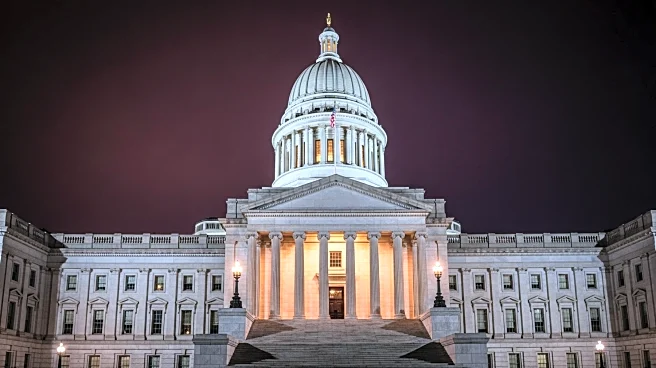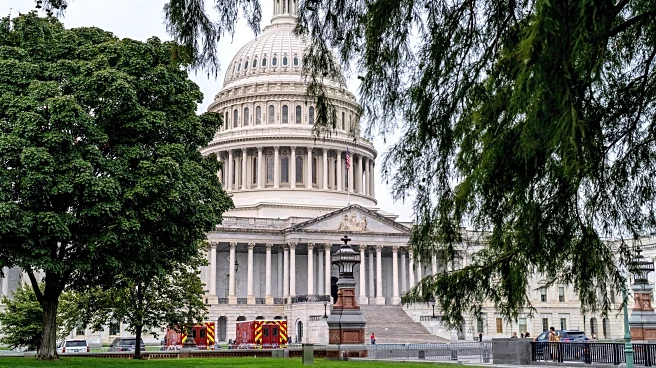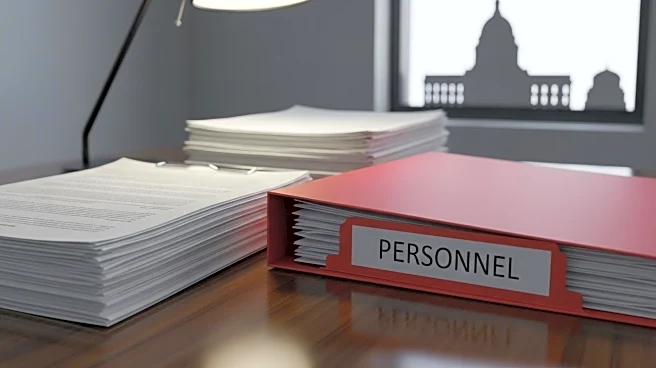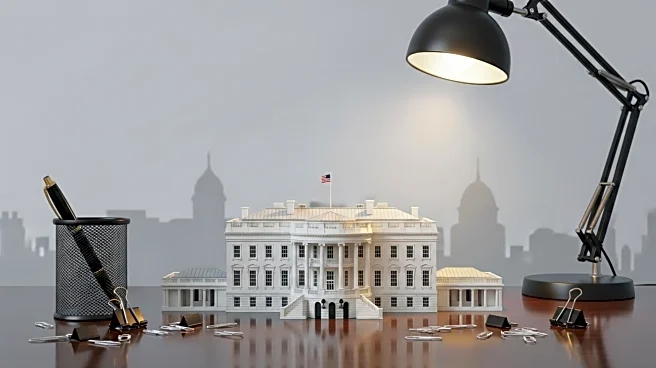What is the story about?
What's Happening?
The Trump administration has announced that layoffs of federal employees are imminent due to the ongoing government shutdown, which began on October 1. The Office of Management and Budget (OMB) has directed agencies to prepare for reductions in force (RIFs) to manage the financial constraints imposed by the shutdown. Vice President JD Vance emphasized the need to save money to maintain essential services, while OMB Director Russell Vought indicated that RIFs could begin within days. The U.S. Patent and Trademark Office has already issued layoff notices, and the Congressional Budget Office estimates that 750,000 federal employees could be furloughed, costing the government $400 million daily. Two federal unions have filed a lawsuit against the administration, arguing that the RIFs violate federal law.
Why It's Important?
The potential layoffs could have significant implications for federal employees and the services they provide. The Trump administration's approach to managing the shutdown through RIFs marks a departure from previous shutdowns, where employees were typically furloughed and later compensated. The legal challenges from federal unions highlight concerns about the legality of the administration's actions, which could lead to further disruptions in government operations. The situation underscores the high stakes of the shutdown, as essential services may be affected, and the financial burden on the government continues to grow. The outcome of the legal challenges and the administration's next steps will be closely watched by stakeholders across the political and economic spectrum.
What's Next?
The legal proceedings initiated by the American Federation of Government Employees and the American Federation of State, County and Municipal Employees could influence the administration's ability to proceed with the RIFs. If the court grants a preliminary injunction, it may halt the layoffs temporarily. Meanwhile, the administration must navigate the complexities of the RIF process, which involves prioritizing employees based on various factors and could expose agencies to legal challenges. The resolution of the government shutdown and the enactment of fiscal 2026 spending will also play a critical role in determining the future of federal workforce reductions.
Beyond the Headlines
The administration's strategy of using RIFs during a shutdown raises ethical and legal questions about the treatment of federal employees and the prioritization of government functions. The potential long-term impact on public services and employee morale could be significant, as the administration's actions may lead to a loss of experienced personnel and disruptions in service delivery. The situation also highlights the broader political dynamics at play, as Democrats in Congress question the legality of the administration's actions and the implications for future government operations.
AI Generated Content
Do you find this article useful?













